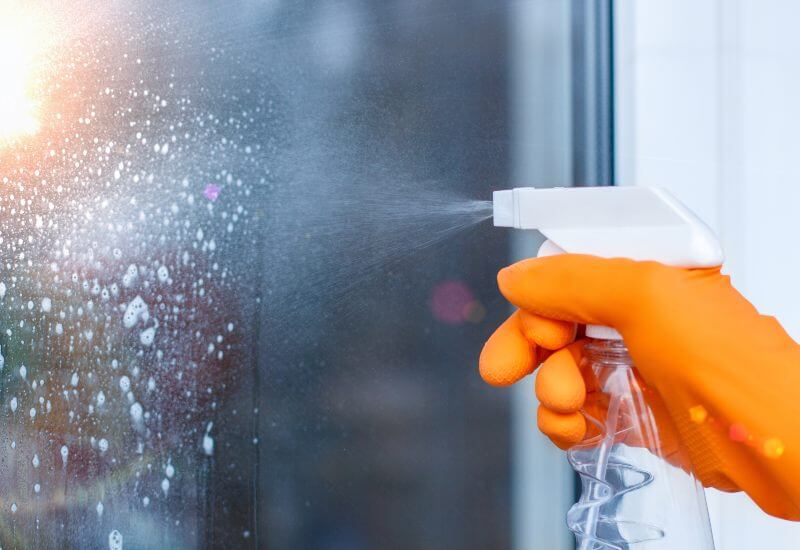
Mold is an unwelcome guest in any home. Moisture, oxygen, and a food source are all it takes for mold to grow, so damp bathrooms are the perfect setting. Black or green gunk in your shower or bathtub is not only unsightly—it can also cause respiratory problems and other health risks, especially in sensitive individuals. Here’s how to clean mold from your shower and prevent mold growth in your bathroom from now on.
Gather Your Supplies
First, buy a shower cleaner specifically designed to remove mold. If you prefer, you can make your own mold cleaner by mixing equal parts water and hydrogen peroxide, equal parts water and white vinegar, or one tablespoon baking soda per one cup water. Combine your preferred ingredients in a spray bottle and mix well.
Then, gather the rest of your supplies. You’ll need rubber gloves to protect your hands, a stiff-bristled scrub brush, and a clean towel.
Clean Your Moldy Shower
Follow these steps to thoroughly remove mold from your shower tiles:
- Spray all moldy surfaces with your cleaning solution of choice.
- Turn on the bathroom fan to help exhaust fumes from the room. This is especially important if you’re using a bleach-based product.
- Let the tiles soak for at least 20 minutes. Reapply the cleaner as needed to keep the affected areas damp.
- Don your rubber gloves and scrub the moldy areas vigorously with a brush.
- Rinse with clean water and see if the mold has been removed. If any gunk remains, repeat steps 1 through 4 as needed.
- Once the mold is gone, wipe the shower dry with a clean towel.
Prevent Future Mold Growth
Keep your bathroom and shower mold-free with these additional tips:
- Run the exhaust fan while showering and for at least 20 minutes after.
- Remove standing water from your shower with a squeegee or towel after each use.
- If you keep an anti-slip mat in your shower or tub, hang it up to dry after each use.
- Spray white vinegar on your shower curtain, sliding glass doors, and tiled walls after each use.
- Regularly clean your shower with mold-killing products.
- Don’t pile damp towels on the bathroom floor.
- Regularly launder shower curtains and bathmats.
- Run a dehumidifier in the summer to keep the indoor relative humidity below 50%.
- Fix plumbing leaks promptly.
- Be on the lookout for cracked or spongy shower tiles.
- Paint your bathroom walls with mold-inhibiting paint (but avoid painting over active mold).
If your shower mold problem is related to a plumbing leak, clogged drain, or drippy showerhead, reach out to Puget Sound Plumbing and Heating. Our services can help keep standing water out of your bathroom, a key aspect of preventing mold growth. We even offer 24/7 plumbing services, so you can count on us day or night. To speak with an experienced Seattle plumber, please call us at (206) 938-3219 or contact us online today.


